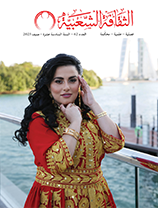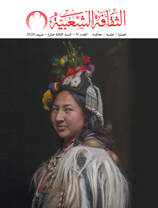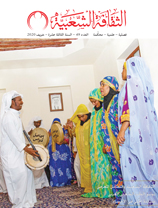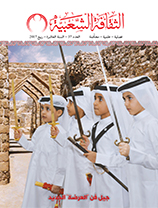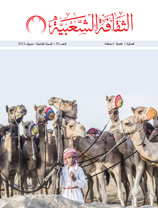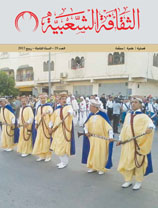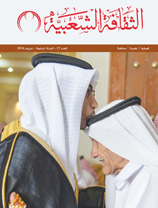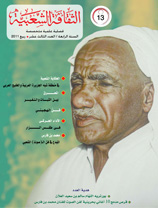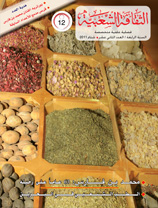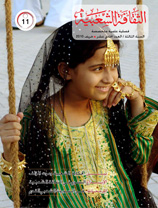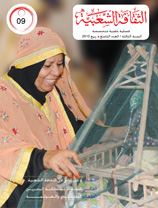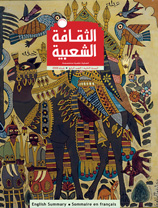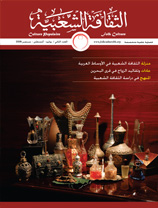Study of Quranic Intertextuality in Algerian Folk Poetry, MuhammadBalkhair, as a model
Issue 47
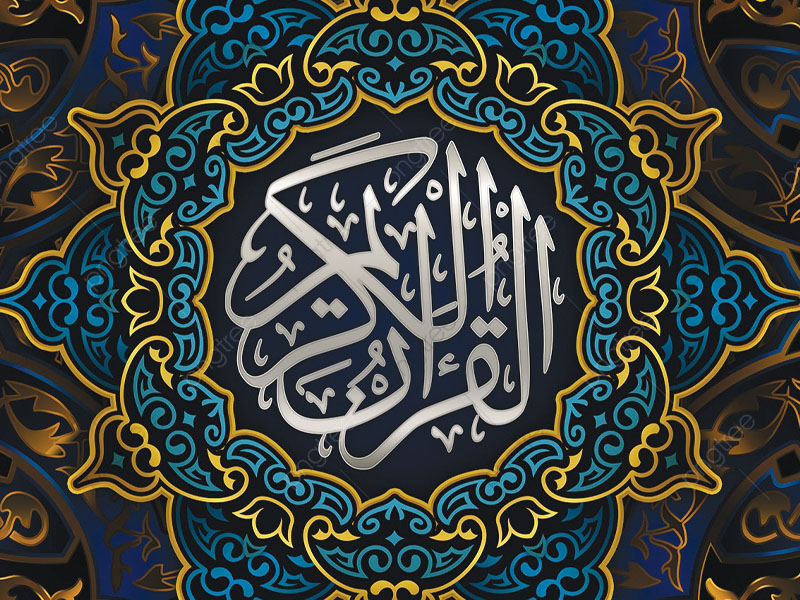
Dr. Budiya Imhamad – Algeria
The semiotician Mikhail Bakhtin was the first to emphasize the interactive nature of the literary text. Then the term "intertextuality "was adopted by his student Julia Kristeva for the first time in modern critical theory through her research, in which she observes that text is formed through the process of producing different texts, in what is known as textual productivity. The technique of intertextuality is based on the creation of text based on the implications of the rhetoric of different history where a text cannot be read in isolation from other texts, and here will undoubtedly create one multi-space text subsequently leading all the texts to overlap; and all these texts are interwoven by a single thread. In the space of the text, several voices intersect and meet.
The concept of intertextuality has preoccupied the thinking and research of many researchers after Julia Kristeva, most notably of whom include: Roland Barth, Michel Foucault, Dominique Maingueneau, Umberto Eco, Michail Riffaterre and Gérard Genett. All these researchers tried to attach different concepts to intertextuality. This contributed to the expansion of the use of the term “intertextuality” in both Western and Arab studies.
As a result the forms created by the interaction between texts were extensively studied by scholars of rhetoric and criticism in the Arab world through focusing on poetic oppositions, and poetic plagiarism, as well as citation, allusion, inclusion, anomaly, connotation, textual coherence, allegory, harmony pun, double entendre, etc.
Many Arab writers and researchers have taken interest in the theory of intertextuality including: Abdullah Al Ghathami, Salah Fadhl, Abdul-Malik Murtadh, Muhammad Muftah and Abdul Qadir Fiduh.
Poet Muhammad Bullkheir, who was amongst the great Malhun poets, was born in 1822 and was exiled to the island of Corsica in 1884 because of his participation in the revolution of Awd Sayyid al-Sheikh. He died between 1904 and 1906. He was a close friend to Sheikh Bouamama and a fierce fighter. He resisted the French colonialists with both his sword and poetry. He was buried in Boualem, El Bayadh Province.
Folk poetry has long strived to liberate the homeland; it is a means to liberate the people and expose the methods of subversion of the colonizer. This type of poetry embraced revolution, so all of the poems of Muhammad Bullkheir were of revolution, resisting colonialism and exposing its methods and intrigues. Both folk and formal poets knew their respective roles, and were certain that the word is mightier than a tank or machine gun.
The folk revolutionist poetry seeks to convey an idea, sometimes using symbolism and choosing its words with dedication to symmetry, careful appreciation of connotation and cadence. But the revolutionist poem often lacks organic unity so that lines can be manipulated and changed without confusing the meaning.
Algerian folk poetry was concerned with national issues, especially those which related to identity: religion, language and homeland. The issue of freedom took the lion's share, and the theme of revolution was closely connected. Although not always poetic in itself, the poetic nature of the language of liberation sometimes made it so.
All Malhun poets, without exception and even the illiterate of them, took some vocabulary and contexts from the Holy Quran. This was because their poems were religious most of the time, and most of the poets studied in the Katatib and Zawaya, which increased their attachment to the Holy Quran in terms of words and meanings. As for those who were not highly educated, like the poet Bulkhair, they were still attached to and poetry influenced by the Holy Quran as it was suffice for them to attend various gatherings and congregations (for happy or sad occasions) where the Quran was recited; hear the reading of the daily hizb (quranic text) which was read at most mosques in Algeria; and attend Tarawih prayer where the Quran is recited during the nights of Ramadan.
The poet used Quranic verses that he heard and intermingled them with his own sentiments; this allowed him to create new context.
The holy Quran was the first text that captured the contemporary poet’s attention. It carries the dimensions of unlimited life and humanity, so the poet chose to use some words of the Quran and interact with them.
This is a simple brief on the Quranic intertextualization in Algerian folk (Malhun) poetry. The poets were influenced by Quranic text through memorization, reading and recitation; then rewrote parts of it employing different artistic levels according to their efficiency and awareness of poetic construction sometimes through repetition, and sometimes through incorporation, which relies on the indication and connotation that the present text cannot convey itself alone without the use of the Quranic text.
Our poet Muhammad Bullkheir, along with other Malhun poets, realized that the Holy Quran has the ultimate rhetoric text. So Quranic rhetoric can be felt in his and in his peers' poetry as it invokes many Quranic verses. Thus their texts have close relation with and connection to the holy Quran's connotation.





